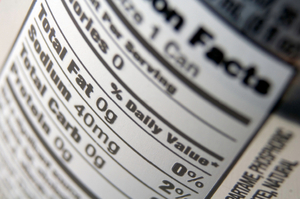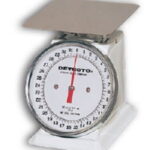Millions of Americans, whether actively dieting or simply calorie conscious consume diet soda with the assumption that fewer calories will keep those extra pounds off yet many come to the fast realization that despite avoiding those hundreds of extra calories a day, the scales are not changing for the better. The key to jumpstarting stagnant weight loss isn’t always avoiding even more calories than normal .The solution lies within lowering one’s sodium intake. Of course diet soda is far from the only culprit but it is one of the sneakiest sources of salt intake for many unsuspecting dieters.
Small amounts of sodium are essential for sustaining life in that is it balances electrolyte levels and aids in muscle functions. It’s well known that too much salt consumption can lead to high blood pressure and can aggravate heart disease and cause kidney damage but most dieters don’t think about the effects sodium has on our water levels. Water retention can cause swelling in arms and legs and can hide the fact that weight loss is indeed occurring. In fact, excess sodium levels can actually cause weight gain.
The average healthy adult should consume somewhere between 2,000 and 2,300 milligrams of sodium a day yet when eating processed foods, it’s quite easy for one to consume up to 4,000 milligrams a day. Some packaged meals such as ramen-style noodles contain enough sodium to max out your levels for the day in one meal. Most natural foods contain low levels of sodium but it’s important to stay away from processed foods where sodium is an ingredient on the nutrition label whether dieting or not. Packaged foods with “No Salt Added,” (NSA) or “Low Sodium” are usually fine. Also salt substitutes shockingly still contain sodium, only in a different form so be sure to stay away from those.
The first step is to throw away table salt. As people get older, taste buds start to die off, which is one reason older individuals pile on salt at meals and young people use much less. Since we tend to diet as we get older the connection only makes sense. Avoid adding salt to cooked meals and look for online NSA recipes for meals, sauces and condiments such as ketchup. During the first week of lowered salt intake, most people complain that foods they once loved now taste too bland to handle, but one can lose up to ten pounds in once week from limiting salt intake alone, plus after that first week dieters start appreciating taste all over again in a different way.
Now back to diet sodas. While diet sodas contain around 40 milligrams per can, many people down can after can thinking no calories, no harm when they would be better off drinking a regular soda or two a day in order to satisfy cravings and limit salt intake at the same time. These levels might seem rather low but when drinking regular sodas and not concerned with body weight, people tend to drink less cans of soda a day. Dieters on the other hand tend to drink more a day to compensate for an emptier belly or because they mourn sugary sodas in the first place. Also, dieters have no issues with buying fountain diet sodas in a monster gulp size. With three or four servings in one cup, one can imagine the levels of sodium going unnoticed.
While calorie counting is important, lowering the amount of salt one ingests can either speed up steady weight loss or help someone get over his or her plateau. The key suggestions are to eliminate table salt, avoid fast food and other high sodium foods where sodium is an added ingredient, never add salt when cooking and stay far away from salt substitutes.




